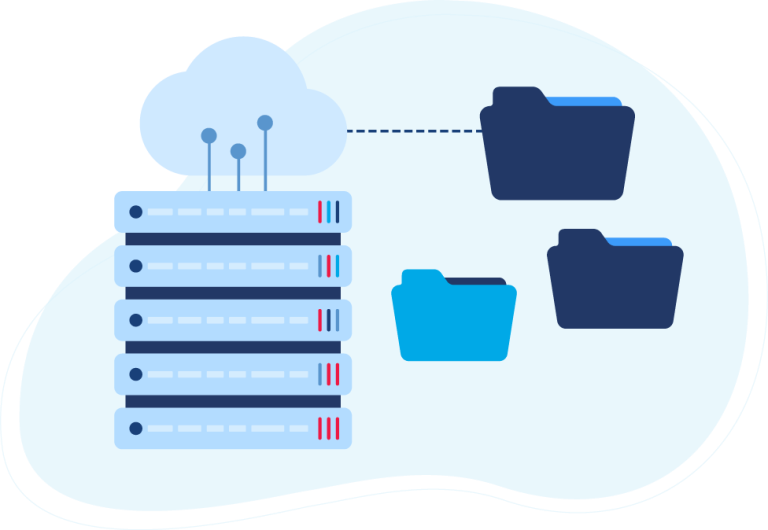We live in the age of leaks. With almost an announcement a day of a major breach, hack, or leak, security and privacy are something that’s on all of our minds as consumers. But is it on our minds when we step into work to the same degree as when we’re consumers?
Risk management isn’t new. But lately, there has been heightened focus from eCommerce and multichannel commerce merchants in identifying, evaluating, and prioritizing risks followed by applying resources to minimize, monitor, and control the probability or impact of unforeseen negative events or to maximize opportunity. Risk management in multichannel and eCommerce is just as important as in any other industry, but achieving a secure and seamless system isn’t as easy as installing McAfee. Proper risk management for merchants takes careful planning, strategic meshing with other corporate objectives, and partnering with the right solution providers and technology solutions to implement and maintain everything. And risk management for merchants isn’t all about data security and privacy, either; it also includes managing other negative events like data errors, unhappy customers, oversold products, and many other common scenarios many retailers face regularly.
The challenge with risk management for merchants is really to turn risks into opportunities. The right data integration approach with the right partner behind the solution to support your business can make all the difference between the two.
Data Security and Privacy Risk Management with Data Integration
The focus on privacy and data security has never been higher. As we started this article off discussing, the world is a scary place for consumer data—yours and mine included. But how often do we flip the script and think of the data security implications for our business when we walk through the door each morning?
Approaching the top-tier need of ensuring your customers’ data is securely locked down is a complex process. VL OMNI would know; we went through the process of evaluating our own data security as part of the EU-GDPR compliance process we went through in early 2018. Not only should your own business strive to meet the GDPR compliance guidelines—an extremely important checkpoint to pass if you intent on selling to EU citizens, regardless if they’re physically located in the UK when they buy from you—but all your partners and suppliers ideally should be compliant, too.
Part of the GDPR compliance process includes ensuring all platforms and third parties also manage their data privacy to the GDPR standard. That means the applications storing, processing, and moving your data (like VL OMNI’s data integration platform) should be GDPR compliant as well. Partners on the ball will have GDPR language set out clearly in their contracts, but ensure you do your own due diligence in exploring the partners’ compliance, paying special attention to their Data Breach Policy and Response Time (AKA the emergency response plan should the worst-case scenario happen). Some of this language should also be laid out on potential partners’ websites, usually in the Privacy Page.
Depending on your industry, you may also want to explore your partners’ data center locations. Where you data is warehoused is important for some industries and for GDPR compliance. For example, VL OMNI has three data centers—one in Canada, one in the USA, and one in Ireland—to ensure our merchants’ data is secure according to GDPR and specific industry needs.

Managing Merchant Risk with Data Integration
No matter your channels, if you’re a Merchant, risk management across a number of variables and factors should be something you actively plan for as a part of your cohesive strategy. Both eCommerce and multichannel commerce have some known risks that can be planned for in advance. Specific areas of risk to be managed for merchants include around the customer, delivery, and overall unified customer experience at all touchpoints. Risks in each of these broad categories can be mitigated or eliminated with the strategic combination of technology, the right partners supporting your business, and tying all systems and applications together in the most efficient and effective way possible.
The most common risks for Merchants originate from data: the data quality itself, how it’s moved, and what it means to your business and end customer. But with a little bit of forethought, each of these risks can be minimized if not outright managed right out of existence. The right data integration solution for your business is central to most of the risks listed (below) with the exception of the data quality itself, which pertains more to operational processes and the originating source of the data being integrated throughout the rest of the organization.
But it’s very important to understand that not all integration solutions are created equal. If you go cheap, expect to get cheap, in other words. Make sure you select a data integration partner who can meet your strategic needs today and well into the future, and one that doesn’t force you to alter your applications or approach to fit the solution. With the right data integration solution and partner at your back, the difference is apparent:
| Example Merchant Risks | Ill-fitting data integration strategy and approach |
Strategically aligned integration strategy and approach |
| Conflicting data in two or more applications | No ability to strategically organize integrations or create a central point of data truth | Ability to create a central point of data truth (hub), which all other applications, trading partners, channels and more are integrated off of (spokes) |
| Data errors from manual processes | Persistence of need for manual manipulation of data due to imperfect/incomplete data movement | Eliminated via automated data delivery and applied business rules |
| Inconsistent data delivery to target applications | Lack of ability to configure to match unique requirements of specific applications | Tightly integrated source(s) and target(s) applications based on thorough evaluation and research |
| Inaccurate inventory count | Can be the source of these errors by way of ineffective functionality and/or lack of strategic approach to integration ecosystem as a whole | Eliminates inaccurate inventory counts and other data duplications through centralizing the integration system around a central application(s) hub, the ‘central point of data truth’ |
| Need to add, modify, or remove an application or channel | No ability to duplicate existing connections; modification is time-consuming and expensive; removal includes removal of the integration (no ability to ‘pause’ integration) | Integrations can be easily and quickly modified or duplicated without incurring significant costs or having to disable/dismantle the broader system |
| Increase in data volume | Limitations on the amount of data processed, creating errors, backlogs, and other issues across the organization | Integrations are fully scalable to any volume |
| Lack of customer visibility on order status | May improve delivery of some data important to the customer experience (i.e., email notifications of order received, shipped), but may not provide a complete picture nor provide it in a timely manner | Unification of data throughout merchants’ business and application of business rules results in delivery of data important to the customers’ order and receipt of goods |
| No unified customer experience across all touchpoints (ecommerce, marketplaces, bricks-and-mortar, etc.) | Near impossible to achieve | Curation of the customer experience at the strategic consultation level, integration ecosystem configured to deliver data that meets the customer experience the merchant wants to create at all touchpoints |
| Customer management and accurate visibility into order and transaction history | May provide some partial visibility | Can ensure a complete profile of customers’ data is in all necessary applications and customer management tools |
| Timely processing of order-related data | No scheduling possible to deliver data to applications on a fixed schedule or in real-time | Ability to match data delivery schedule to the needs of business |
| Further data manipulation at target applications | Inability to apply business rules directly to data movement; problem will persist | Business rules applied directly to data transformation, matching target applications’ data formats while also meeting business-specific treatment of data needs |
While some risks cannot be effectively managed away in advance (like natural disasters and power outages), putting a plan in place that includes robust technology, sophisticated data integration to match your goals and business needs, and top-class partners that are there to support you in times of need are critical to effective risk management for merchants. Many common risks to merchants’ day-to-day operations involve data and its movement throughout your organization. In approaching managing any of the sample risks we laid out above, or any other risks that involve your organizations’ data, we cannot emphasize enough the importance of having a robust data integration strategy and matching solution partner to risk mitigation for merchants. It is the difference between having all your information distributed accurately throughout your organization when, where, and how you need it, and continually playing catch-up in running behind ineffective processes to patch up issues.
And finally, partner provider selection is important. Ideally, any partner should be able to support your business’ growth for a number of years. A cultural fit between your company and your partners’ is important, too; if you’re in a situation that requires expert help to manage risk, you want a partner who’s invested as much in your business’ success as you do.
 D365 Business Central
D365 Business Central Netsuite
Netsuite


